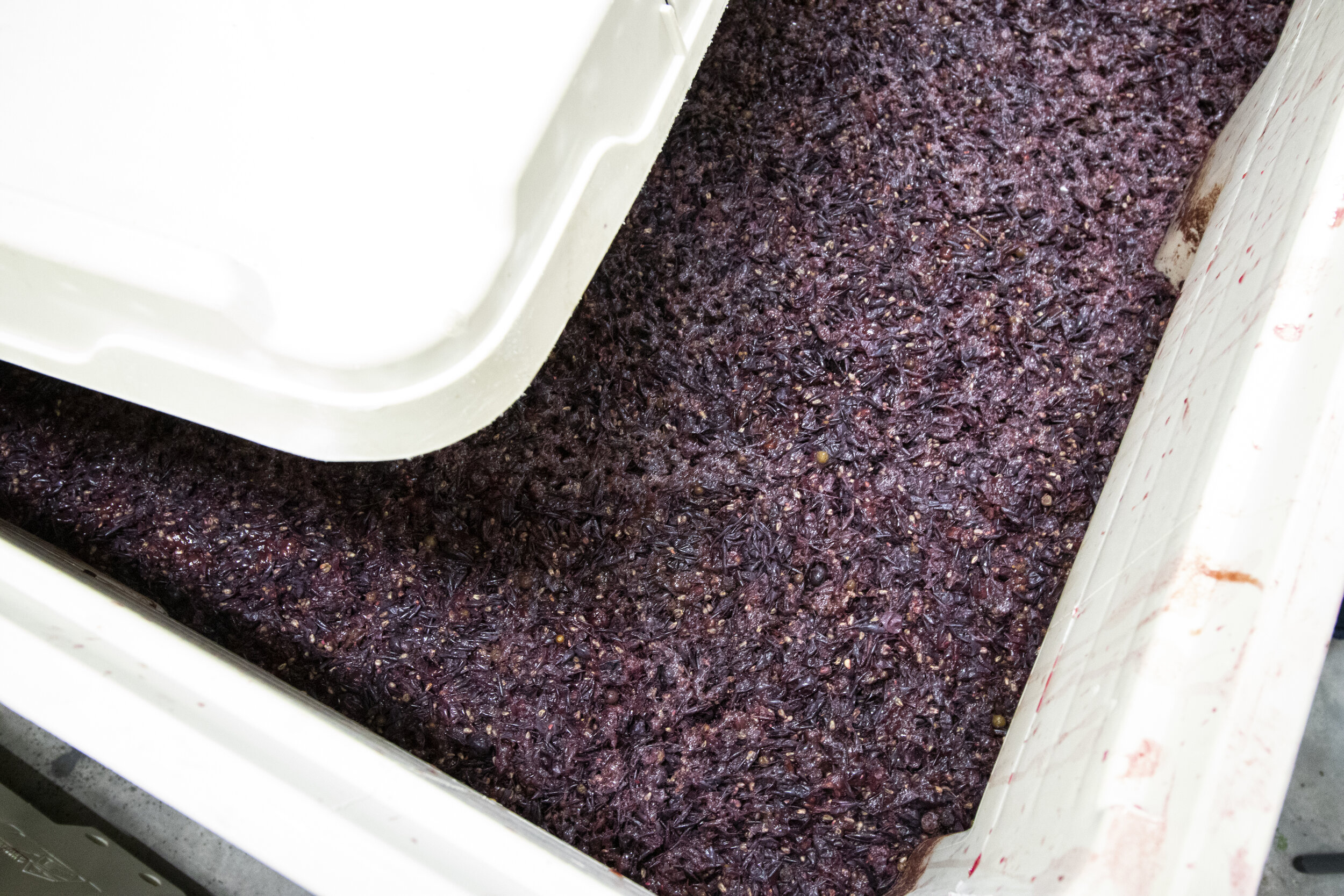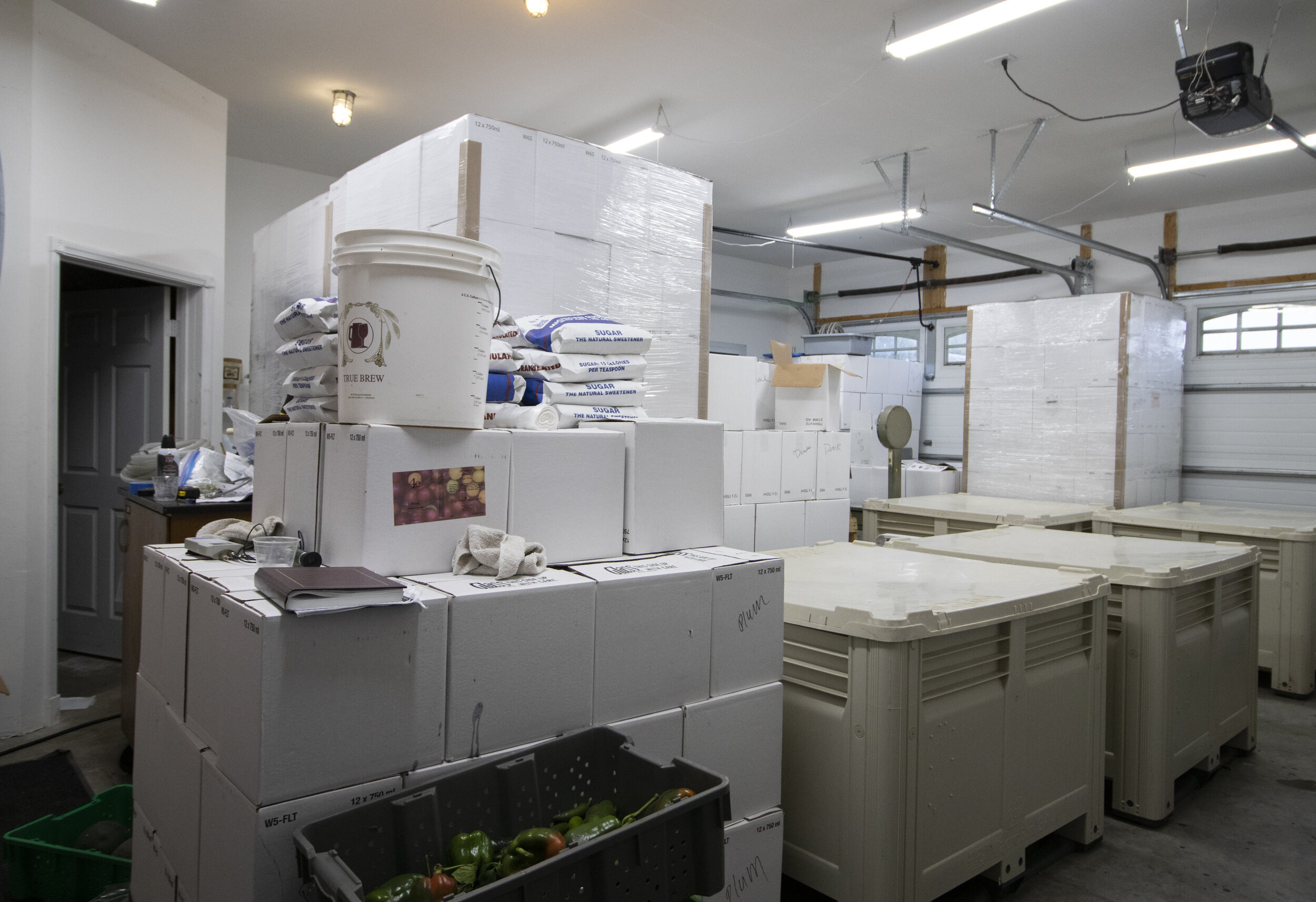4e Winery
4e Winery is a beacon in the soy and corn landscape that makes up most of North Dakota. The winding grapevines at the entrance of the winery, stand proudly, welcoming guests.
Greg and Lisa Cook never set out to be wine makers.
Greg’s intrigue in wine started as a teen with an interest in the fermentation process. Growing up in Michigan, there were not many wineries or winemakers to learn from firsthand, so Greg spent time at the local library learning everything he could about making wine. Greg was mostly interested in the fermentation process. Aptly, Greg went on to get his Ph.D. in organic chemistry. In 1996 he started teaching chemistry at North Dakota State University. In 2000, Greg started making homemade wines for his friends and family. His home set up was enough to get him hooked. Greg wanted to expand his operation to growing and producing. As Greg improved his processes, he found himself getting more and more interested in the ingredients he was using. He found his passion in crafting quality wines from pure northern prairie ingredients.
In 2012, Lisa and Greg found and bought their dream property in eastern North Dakota, for the winery they had talked about for a decade. They spent the first year rehabbing and constructing the property to be more suitable for what they wanted. They fashioned a tasting room for customers, rezoned a lot of the growing areas for the vines and other produce, and converted their garage into a fermentation area. In 2015 4e Winery opened to the public. The name 4e comes from Lisa and Greg’s interest in the ancient Greeks' belief that everything was made up of four unchanging elements – Earth, Fire, Water, and Air, as well as a nod to Greg’s profession as a chemist.
“This idea formed the cornerstone of science, philosophy, and medicine for over 2000 years. The four icons are the alchemical symbols for these classic building blocks of the universe. They represent our philosophy of returning to the basic elements of winemaking. Quality products, born of the northern prairie (earth), kissed by the sun (fire), nourished by the flowing rivers (water) and brought to life by prairie breezes (air) are the foundation of 4e wines. Our goal is to produce the finest wines allowing the purity of the fruit to express itself as it was meant to be with as little manipulation as possible,” said Lisa.
Today, 4e is a well-received gem in the Fargo-area and a destination vineyard.



“We love visits from out of towners and people passing through, but our local customers are the bread and butter of our operation,” Lisa said, “We couldn’t do this without them.”
4e Winery grows Red Frontenac vines, one of the cold climate grape varieties that has been developed to survive the extreme temperatures in North Dakota. This year, the five-year-old vines produced 741 pounds on grapes. The grapes are picked and crushed on the same day to ensure freshness. With the help of three other part-time employees, Lisa and Greg picked and crushed nearly 750 pounds of grapes in eight hours. On average, 4e produces roughly 12,000 bottles of wine.
In addition to their grapes, 4e also has a garden where they grow rhubarb and other produce. 4e’s rhubarb wine is a customer favorite. This year 4e harvested from 125 rhubarb plants and processed roughly 800-900 pounds to make their popular sweet and dry rhubarb wine.
Greg and Lisa see importance in offering their customers products that are local to the area. The produce they don’t grow on their own farm, they source from other vineyards and farms close by.
Since opening 4e, Greg and Lisa take on a project every year to improve either their production set up, product, or the land around them. One of 4e’s latest projects is establishing a Pocket Prairie or Native Prairie Relief Strip. 4e worked with the Cass County Soil Conservation District to plant about 4 acres of former pasture with grasses and flowering plants to return it to its native state. The Pocket Prairie Initiative 4e is working on is a huge benefit to the land. The average yield of corn in North Dakota has been near 140 bushels per acre. Monocropping has been proven to deplete soil faster than diverse growing. Native prairie relief strips act as a buffer. Studies show planting strips of native prairie is an effective way to improve soil and water quality, foster carbon sequestration and storage, support populations of beneficial organisms for pest control and pollination, and generally foster biological functioning. Additionally, the native prairie grounds will serve as an area where visitors can explore while they enjoy their wine.
Inside the winery, there’s a warm and welcoming atmosphere. Different wines line the entrance wall, each with their own label designed by the winemaker himself. Lisa is the main tasting host.
“We decided I would take on the role of working with customers and being the face of the winery and Greg focuses on making the wine,” Lisa said.
4e prides itself on offering local ingredients whenever possible.
Lisa and Greg close down the tasting room in November and open back up in May. In their downtime, they plan for the next season and make lots and lots of wine.

